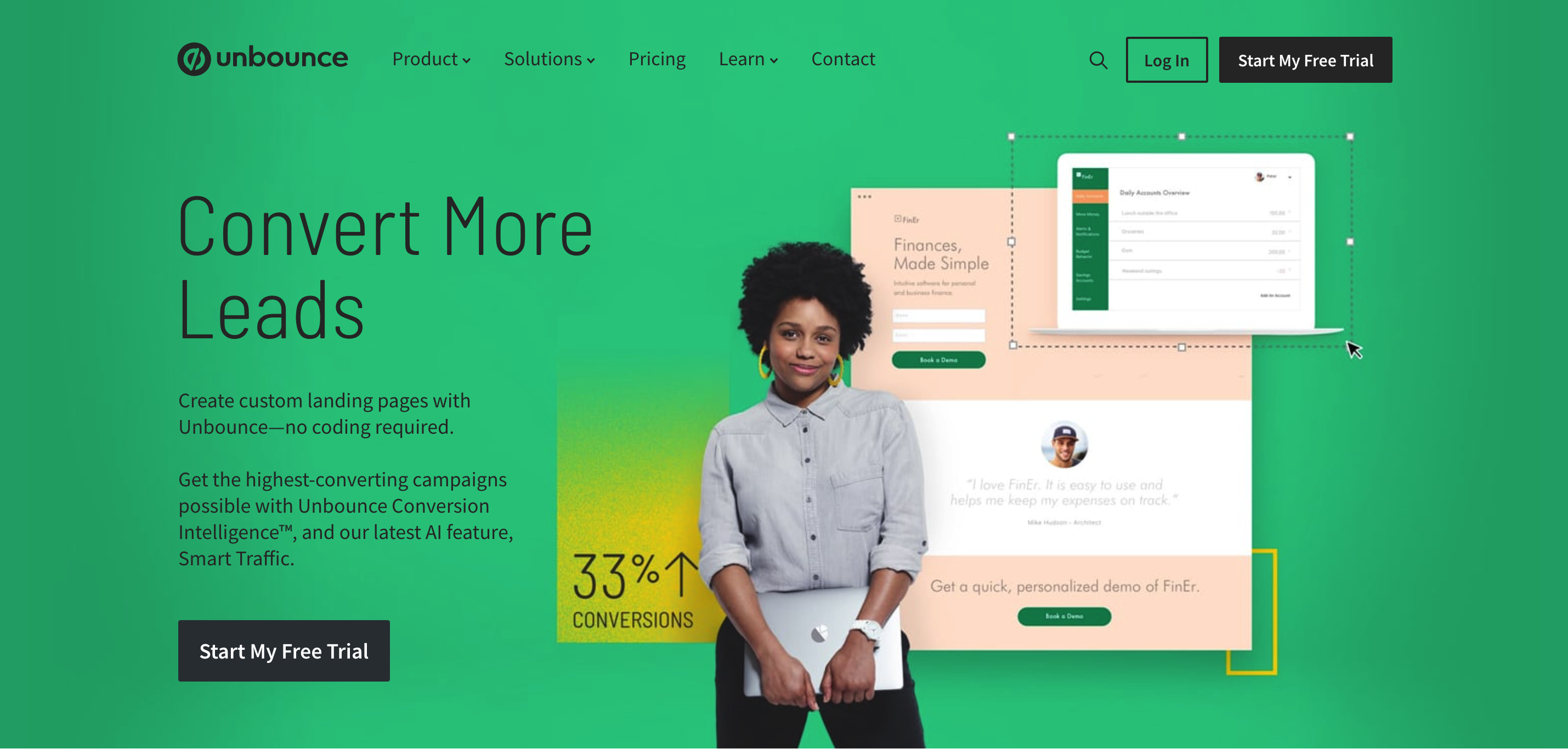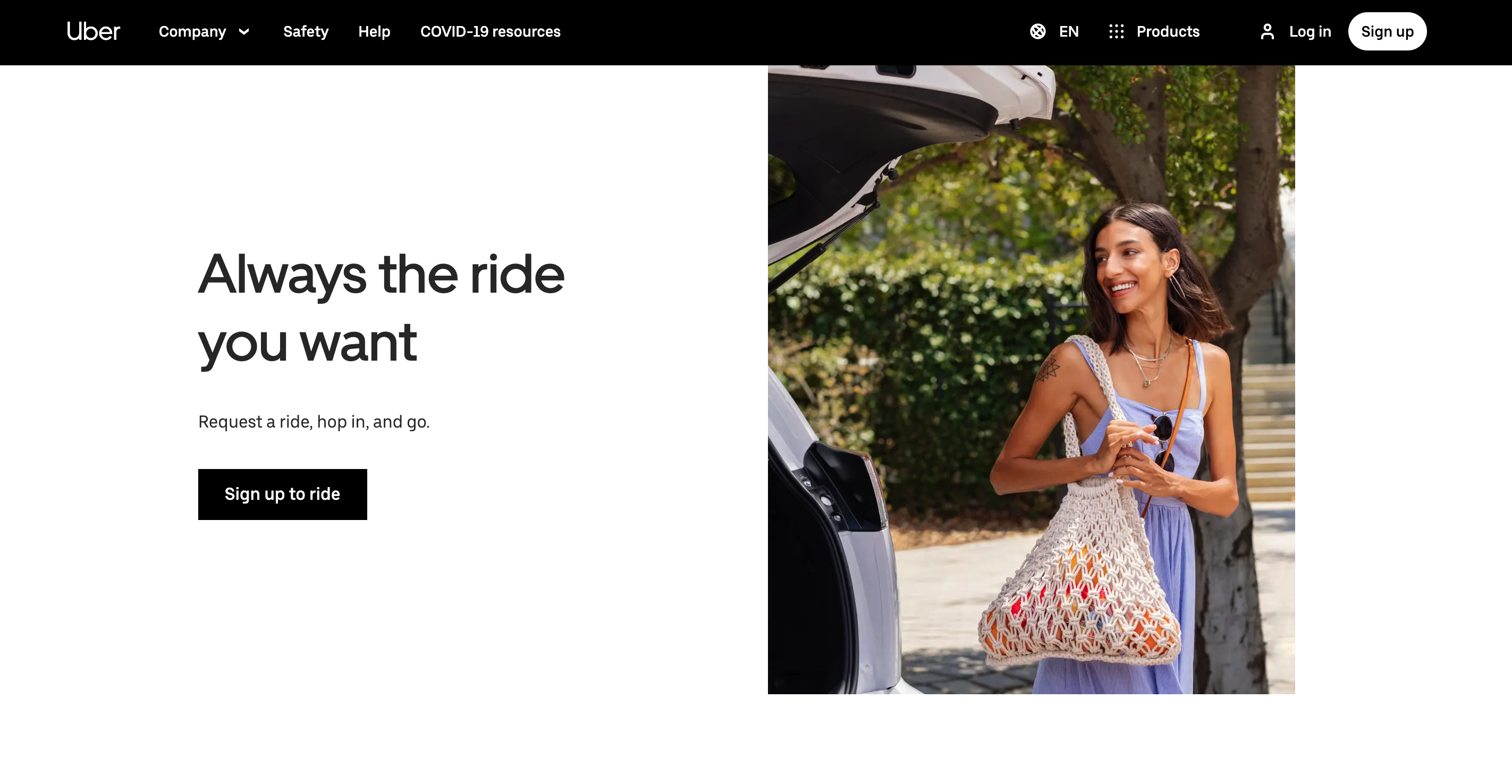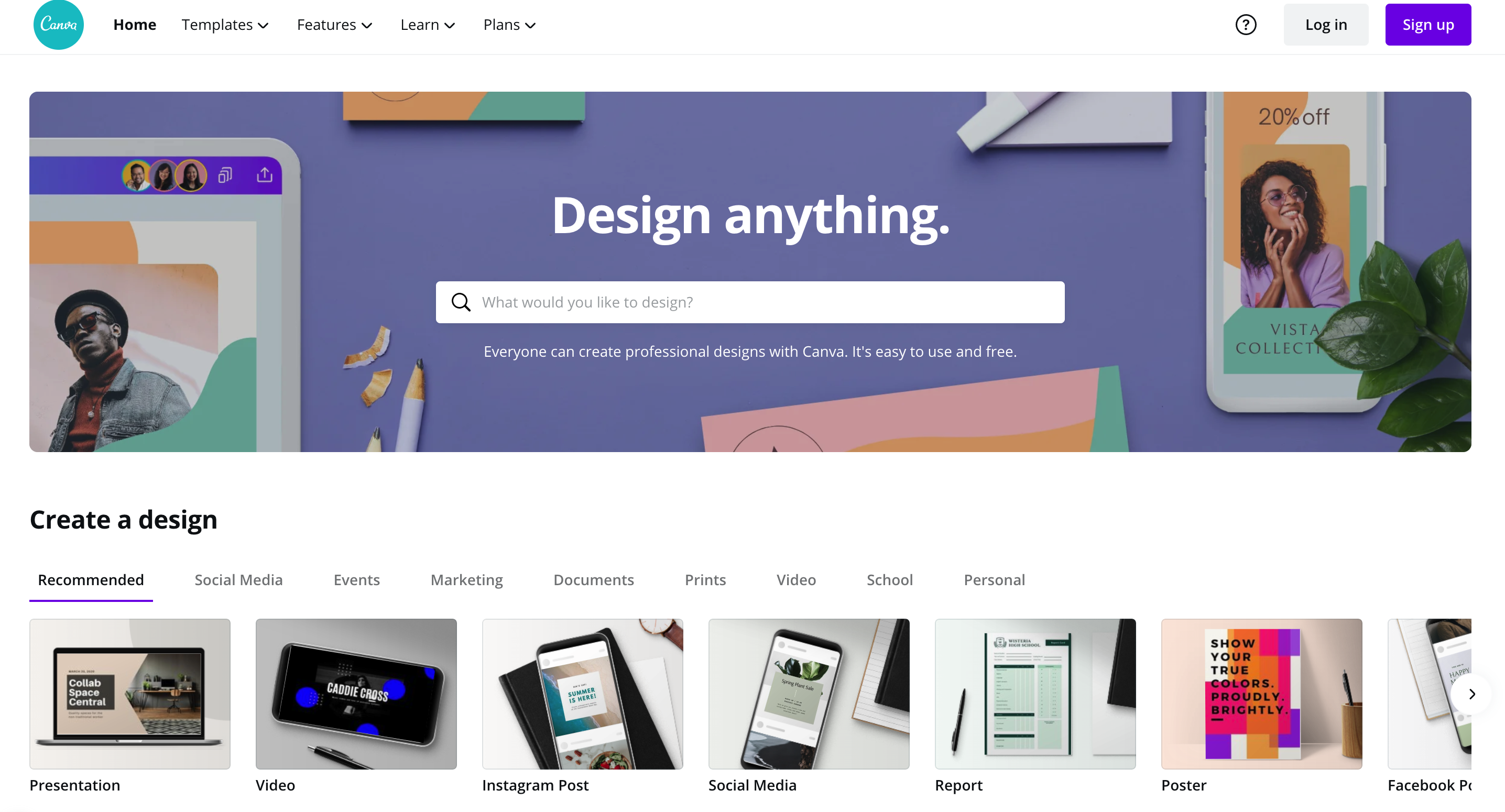A unique value proposition (UVP) is your way of telling potential customers about the benefits your business provides. UVP may refer to an entire organization, a particular product or service, or customer accounts.
Businesses often mix their value proposition with other elements in a marketing strategy. To get things clear, let’s discuss what a value proposition is not.
A value proposition is not:
- An incentive. While a value proposition explains the benefits of your product for customers, it doesn’t stimulate them to make a purchase straight away.
- A tagline. Soundbites from commercials help consumers identify brands, but they do not express the value a business provides.
- Positioning statement. Though these statements emphasize the benefits of a product for a specific persona or audience segment, they are not equal to value propositions. In a nutshell, a position statement is part of a value proposition.
This article will help you understand what a value proposition is, how it helps your brand, and what steps you should take to create it. We’ll also unpack a few tips, templates, and examples.
Why is a value proposition important?
A value proposition is the be-all and end-all of your business. It underlies the products and services your brand offers, defines your marketing strategy and positioning, and so on.
The primary task of a UVP is to explain to your customers why working with you or using your product is the best decision. Without it, your clientele is unlikely to figure out how your product fulfills their needs and why they should choose it.
Another function of a value proposition is to set your brand apart from competitors. Even if you offer off-the-shelf products, you need to make them stand out in a row of similar items, and a clear UVP helps you do it.
So, a unique value proposition makes your brand one-of-a-kind and alluring to customers. However, there are some more substantial benefits this concept provides your business. Read on to explore them.
Benefits of a Value Proposition
A value proposition is a thing that defines your business, promotion strategy, and success in the market. Here are the main advantages a well-designed UVP can bring your business:
- Clear communication. A value proposition helps you make a good offer to your customers. Clarity drives more prospects at the top stages of the sales funnel and lets you boost revenue.
- Higher quality of leads. Over half of prospective customers mismatch your company. A value proposition helps you achieve almost 100% overlap between your potential buyers' needs and the issues your product tackles. It drives higher conversion rates and saves effort spent on working with unsuitable clientele.
- Improved engagement. When your customers’ values match with your company’s, it leads to increased engagement with your brand, products, and services.
- Unified messaging. A UVP clarifies your offer and usefulness both for customers and employees. Thus, you can be sure that everyone transmits the same values across different communication channels – your website, landing pages, social media pages, and more.
Intelligible communication, high-quality leads, high engagement rates, and consistent messaging impact your business and financial metrics dramatically. Eventually, you’ll get an increase in customer satisfaction, operation efficiency, ROI, and so on. Still, not every UVP can work like magic for your business.
What makes an effective value proposition?
An elaborate value proposition can change the game for your brand. However, to achieve effectiveness, your UVP should fit the following criteria.
- Clarity. A value proposition needs to be clear-cut and easy to understand at first sight.
- Brevity. A potential customer should spend only several seconds to get their head around your value proposition.
- Advantage. A good value proposition sets your company apart from competitors.
- Concreteness. A value proposition should refer to concrete results a customer will get from your product or service.
- Credibility. Make sure you can deliver the value you’ve promised. Otherwise, your business comes dead in the water, as customers are quick to recognize deception and warn others.
An additional piece of advice – avoid hype and empty phrases while crafting your value proposition. Phrases like “amazing product” make no sense to consumers and repel them. For the same reason, you should stay away from “best” and other superlatives – unless you can prove that you really have the right to use them — when you are the clear industry leader in a niche.
We’ve explored the definition of a value proposition, the benefits it brings to your business, and the qualities of an effective UVP. Now let’s move on and unpack the different types of value propositions.
Types of Value Propositions
Marketers offer plenty of concepts to classify value propositions. We’ll stick to the system, offered by MECLABS Institute. It divides UVPs into four levels:
- The primary value proposition refers to the brand itself. In other words, you can call it a brand's mission or the value a business offers the world. The primary UVP answers the question: “Why should your ideal prospect buy from you rather than any of your competitors?”.
- Prospect-level value proposition addresses different segments of your target audience. Thus, you need to tailor it to each potential customer group to achieve the best outcomes. A prospect-level UVP is an answer to the question: “Why should a specific prospect buy from you rather than any of your competitors?”
- Product-level value proposition answers the question: “Why should a prospect buy this product rather than any other product?”. So, it focuses on the benefits your specific product provides.
- Process-level value proposition allows you to drive results for each conversion step for your product. To craft this one, you need to ask yourself: “Why should a prospect click this marketing message rather than any other message?”.
Various types of value propositions help you work the most effectively in different situations across your business. Thus, it’s helpful to have a well-thought-out UVP for different levels. Now, let’s get into detail and find out how to craft an effective value proposition.
How to create a value proposition
- Refer to your brand identity
- Identify your product’s advantages
- Match your advantages with customer's problems
- Explain what makes you the best provider of value
- Work out the unique value proposition
- Split-test and refine
You can’t just pluck your UVP out of the air – to articulate it, you have to conduct research and brainstorm. Here is an algorithm to help you form a value proposition.
Refer to your brand identity
If your business’ mission is vague or poorly worded, you’re unlikely to create an intelligible value proposition. To find and articulate your brand’s identity, answer the following questions:
- Why does your brand exist?
- How do you want to shape the future?
- How will you create that future?
- What principles underlie your behavior?
For instance, if you are developing a sustainable fashion brand, you can answer these questions like this:
“Mass-market brands produce short-lived clothes, depleting natural resources, and cluttering up the Earth. We have an alternative approach. We use lean production to bring out clothing that lasts longer. Our core values are eco-friendliness and high quality.”
Identify your product’s advantages
For this task, brainstorm all the benefits your product offers, including functional and emotional ones. In other words, you can mention specific characteristics your product has, as well as the emotions it brings about in your customers. For a sustainable fashion brand, you may name high quality, classic styles, and the pride a person feels when they wear ethically produced clothes.
Don't worry if the roster is too long – you will assess the benefits and cross out the unnecessary later. Once the list is ready, try to figure out what value each of the advantages brings to a customer. It may be time savings or cost, helping to lead the lifestyle they want to, and so on.
Match your advantages with customer's problems
To make sure your value proposition will reach your goal, compose a list of problems your potential customers face. Take only those that relate to your product. For instance, your prospects may struggle to find durable clothing or can’t afford to buy it from most sustainable fashion brands.
To spot these issues, create a buyer persona – follow our guide to compose a plausible customer profile. To get a clearer picture, conduct research – browse social media and online forums where your potential buyers spend time and identify the problems they discuss. You may also conduct in-depth surveys of your current clients.
Prioritize the importance of consumers’ problems in the list and match them with your benefits. Focus on the most important issues your potential buyers face. This step is essential to communicate your value proposition properly. Bear in mind that customers want to hear how your product solves their problems, not a list of features.
Explain what makes you the best provider of value
Value proposition implies differentiation from competitors. So, after you’ve created a list of your product benefits and matched it with the customer issues, conduct a competitor research. Look at what they offer customers and identify their value propositions. This will help you understand how to formulate your UVP in a manner that beats your rivals.
To get things right, focus on the differences between what your opponents propose and what you can offer. For instance, if a rival fashion brand manufactures expensive clothes, highlight that you provide a cheaper alternative. Accentuate differences that make your business stand out.
Work out your unique value proposition
By now, you have awareness about your brand identity, product benefits, and their value for potential customers, as well as differences between you and your competitors. With this information on hand, frame your value proposition in one short sentence. Try various elements and see how they work together.
In the beginning, you can come up with several statements. Value proposition options for a sustainable fashion brand may sound like “We make ethical fashion affordable” or “We provide high-quality clothing for a clean future.” Make sure all your UVP variations are clear and concise.
Split-test and refine
If you end up with several value propositions, run A/B tests to find out which variant performs best. The best option is to give a trial for offers that are significantly different from each other. Go for modifications that focus on various user problems or emphasize contrasting benefits.
To test value propositions, you can launch several versions of landing pages or conduct surveys. Ask your customers these questions:
- What do you think about the variations?
- Why do you prefer some options over others?
- Do you believe in our offer?
- How do you understand our proposition?
Testing your value proposition helps you understand what statements resonate with your audience. Also, thanks to trials you can refine these phrases to achieve better results.
Articulating your UVP clearly and concisely may be arduous work. To alleviate the pain of putting your values into words, you can use pre-designed formulas.
Value Proposition Templates
Forming a value proposition is painstaking work that requires mastery in operating words and statements. However, people rarely have talents both in business and poetry. That’s why entrepreneurs and marketers have come up with value proposition templates. You can take into service the following ones:
Steve Blank’s Value Proposition Template
This pattern, offered by the entrepreneur and author, Steve Blank, focuses on customer development. The template works perfectly for small businesses.
| Formula | Example |
|---|---|
|
We help X do Y doing Z |
We help local restaurants launch fast delivery options by offering them special drones. |
Guy Kawasaki’s Value Proposition Template
Tech evangelist, Guy Kawasaki, devised this template to help people write compact yet precise value propositions. Statements patterned this way make good incentives as well.
| Formula | Example |
|---|---|
|
Action + does what + Differentiator (the thing that makes you stand out) |
Deliver faster with our on-demand drones. |
Venture Hacks’ Value Proposition Template
Venture Hacks – a company that supports startups – came up with a value proposition formula that helps grab anyone's attention immediately. With it, you can create the perfect catchphrases.
| Formula | Example |
|---|---|
|
Industry example for/of a new domain |
The SpaceX for local food delivery. |
Cooper & Vlaskovits’ Proposition Template
Co-authors of The Entrepreneur’s Guide to Customer Development, Patrick Vlaskovits and Brant Cooper, crafted the formula to help startups position themselves. You can use this template to form your business mission.
| Formula | Example |
|---|---|
|
Customer + Problem + Solution |
Local restaurants that want to launch delivery. The owners need to launch cost-effective swift delivery. Our drone delivery service lets them launch delivery at the lowest price. |
Following a ready-to-use pattern may help you find the perfect phrasing, especially when you’re stuck. If you want to go further and squeeze every bit of value from your UVP, follow the tips we’ve prepared for you.
Value Proposition Tips
The theory allows you to create a general plan for getting things done, but it’s a practice that makes you come up with the most effective solutions. Thus, we’ve picked pro-tips to help you boost the effectiveness of your value proposition.
- Form your UVP as early as possible. The earlier you define your value proposition, the sooner you can benefit from it. Better yet, with a ready-to-use statement, you can start improving it right away by testing. Such UVP trials allow you to address your audience’s pains and hopes more precisely and drive better results.
- Test values before statements. Sometimes value propositions don’t perform well in tests. To find the reason, examine assumptions about the audience's pains and values before testing UVP statements. Create a small focus-group and examine their beliefs about your hypotheses.
- Rework your value proposition from time to time. As time flies, your target audience may change their preferences and values. A familiar value proposition may not resonate with the new customer beliefs as well as it used to. Thus, testing and refining your value proposition once in a while is a great idea.
The advanced tips listed above can help you take your value proposition to the next level. To improve your UVP even more, learn how to formulate it from professionals. Read on to find amazing value proposition examples from market leaders.
Value Proposition Examples
We've assembled several UVP examples that have helped companies stand out in oversaturated markets, attract loyal customers, and even reinvent the niche they work in. Take a look at real-life value propositions and adopt some of the best practices.
Unbounce – higher conversions
The landing page creator, Unbounce, operates in a busy niche and focuses on a narrow audience of marketers. The service specializes in conversion rate optimization, which is abundantly clear from their homepage.
In the picture below, you can see the main value proposition – convert more leads. To clarify what the page is about, Unbounce uses the phrase “Create custom landing pages with Unbounce — no coding required.” It accentuates that people without technical skills can work with the service. In the next line, the company proves it can keep its promise to boost your conversion rate by listing tools for it.

Uber – easy rides
Remember taxi rides before Uber? Well, it was tough sometimes – you needed to grab some cash, go outside, and catch a car. Not to mention that experience was not always pleasant, as you could end up waiting too long, have to get in a dirty vehicle, and so on.
Uber revolutionized the taxi market by offering a convenient and enjoyable way to order a ride. The brand reflects these values – simplicity and comfort – on its main page with the proposition “Always the ride you want.” The website reinforces that statement with the phrase “Request a ride, hop in, and go.” Yeah, it’s that easy.

Canva
Canva is an online graphics service for editing, creating, and distributing images. The market offers a lot of similar tools, such as Adobe Photoshop or Lightroom. However, they require training, which is not always an option. In this background, Canva sets itself apart by offering the possibility to design any graphic content without learning new skills or hiring a designer.
Canva articulates the value it delivers to customers sharply – the main page offers you to “design anything.” In the next line, the service states that anyone can be a designer and accentuates that using Canva is not only easy but also free.

Casper
Value propositions can help you find an audience even if you sell usual things, like clothing or mattresses. Casper is the best proof of this statement. The company manufactures mattresses and sells them directly to consumers.
Casper offers its customers the sleep they've always dreamed of – this is the brand’s catchphrase. It refers to the main customer's pain – sleep quality. To make the statement more persuasive, the company lists abundant social proof, offers a prolonged warranty, and offers a 100-day free trial.

A landing page is not the only channel to communicate your value proposition to your audience. You can deliver the message via email, SMS, chatbots, and push notifications as well. To explore these marketing opportunities, sign up with SendPulse.
References
- The article “How to create a unique value proposition” on the CXL institute website will not only answer the question from its headline but also tell how to present and reinforce a UVP.
- If you need more UVP examples and hacks, read “The ultimate guide to value propositions” by Resourceful selling.
- Looking for more value proposition templates? The writing “Free value proposition and business positioning statement templates” will provide you with various formulas and frameworks.
Last Updated: 07.12.2023

or